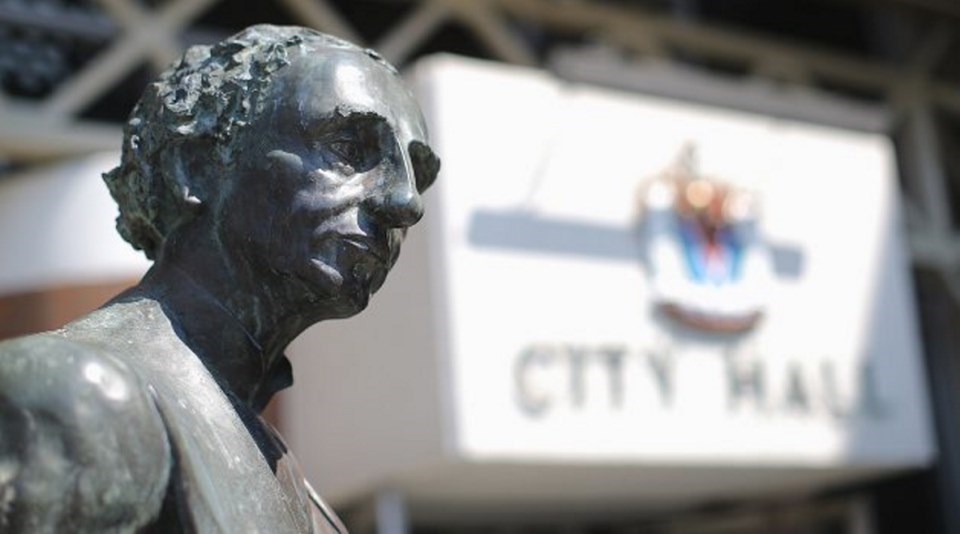In 2018, at a time when words like “reconciliation” were not being mentioned prominently to discuss the relationship of Canadian governments with Indigenous residents, the City of Victoria removed a statue of Sir John A. Macdonald from city hall. Victoria Mayor Lisa Helps, who did not seek a new term in office in this year’s municipal election, has consistently stated that this is a decision she does not regret.
Other cities, such as Kingston, Charlottetown and Regina, followed suit and removed their own monuments depicting Canada’s first prime minister. In Montreal, Sir John’s statue was toppled after a demonstration.
Research Co. and Glacier Media asked Canadians, now more isolated from the emotion of the original protests and decisions, to voice their views on the idea of removing these statues.
More than two in five Canadians (45 per cent) have a favourable opinion of Sir John A. Macdonald – a proportion that rises to 51 per cent among those aged 55 and over and to 63 per cent among those who voted for the Conservative Party of Canada in the 2021 federal election.
We tested other names, including those of former heads of government whose statues have not been targeted for removal. Sir John fares better than four other former Canadian prime ministers when it comes to favourability. John Diefenbaker and Wilfrid Laurier come close at 42 per cent and 41 per cent, respectively, but the numbers are lower for William Lyon Mackenzie King (38 per cent), Louis St. Laurent (33 per cent) and Robert Borden (29 per cent).
When Canadians ponder the decision of some municipalities to remove statues of Sir John, dismay about the practice is stronger than the current popularity of the first prime minister. Almost half of Canadians (47 per cent) disagree with removing all of these statues from public view, while about a third (32 per cent) would be in favour of this course of action.
By a 2-1 margin, Canadians are more likely to say they would “definitely not” remove these monuments (25 per cent) than to unconditionally endorse their withdrawal (12 per cent). At least half of residents of four regions are not thrilled with the notion of taking Sir John’s statues away from public view: Saskatchewan and Manitoba (55 per cent), Alberta and Ontario (51 per cent each) and Atlantic Canada (50 per cent). The proportions are lower in British Columbia (48 per cent) and Quebec (38 per cent).
There is, understandably, a political component. Practically two-thirds of Conservative voters (65 per cent) decry the removal of Sir John’s statues, compared with 41 per cent of Liberal Party of Canada voters and 40 per cent of New Democratic Party (NDP) voters.
Canadians who have previously voiced support for other proposals that could be interpreted as reconciliation are not on the same page when it comes to public monuments. More than half (54 per cent) think the removal of statues of colonial figures is an attack on Canadian history, while just over three in 10 (31 per cent) disagree with this assessment.
As expected, agreement with the notion that removing statues is inappropriate is highest among Canadians aged 55 and over (61 per cent) and drops among those aged 35 to 54 (54 per cent) and those aged 18 to 34 (48 per cent). Politically, NDP federal voters are less likely to approve of this view (43 per cent) than those who cast ballots for the Liberals (67 per cent) or the Conservatives (70 per cent).
Over the past couple of years, we have studied the changing perceptions of the country on reconciliation. We have seen a majority of Canadians (54 per cent) urging for the wide adoption of territory acknowledgements and more than four in five (86 per cent) calling for steps to end bias against Indigenous Canadians in the justice system. Still, when it comes to statues, the perceptions are different. Canadians are more likely now to believe that what has been erected should remain in place regardless of current sentiment, even if their opinions about the historical figures depicted are not exceedingly positive.
Mario Canseco is president of Research Co.
Results are based on an online study conducted from November 24 to November 26, 2022, among 1,000 adults in Canada. The data has been statistically weighted according to Canadian census figures for age, gender and region in Canada. The margin of error – which measures sample variability – is plus or minus 3.1percentage points, 19 times out of 20.




